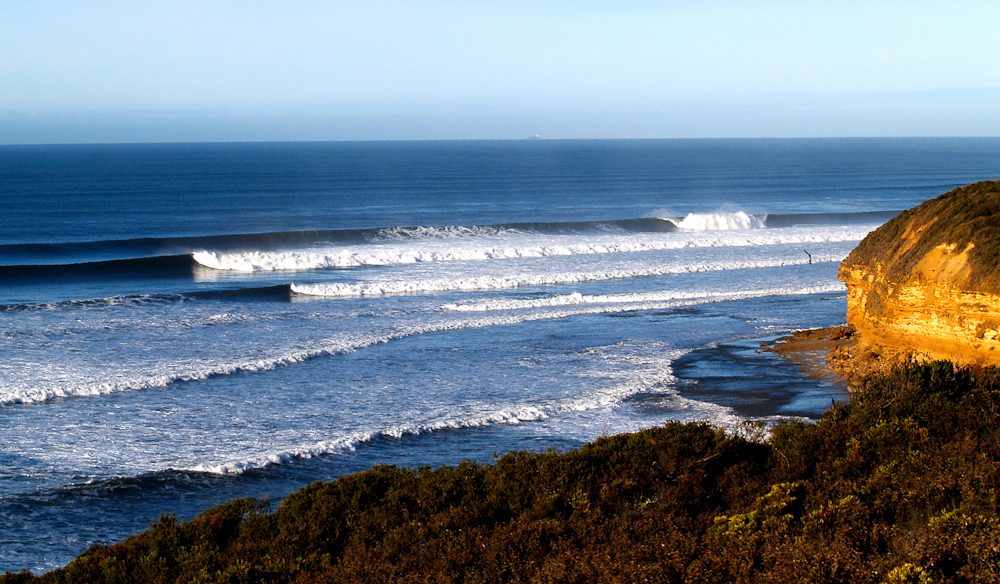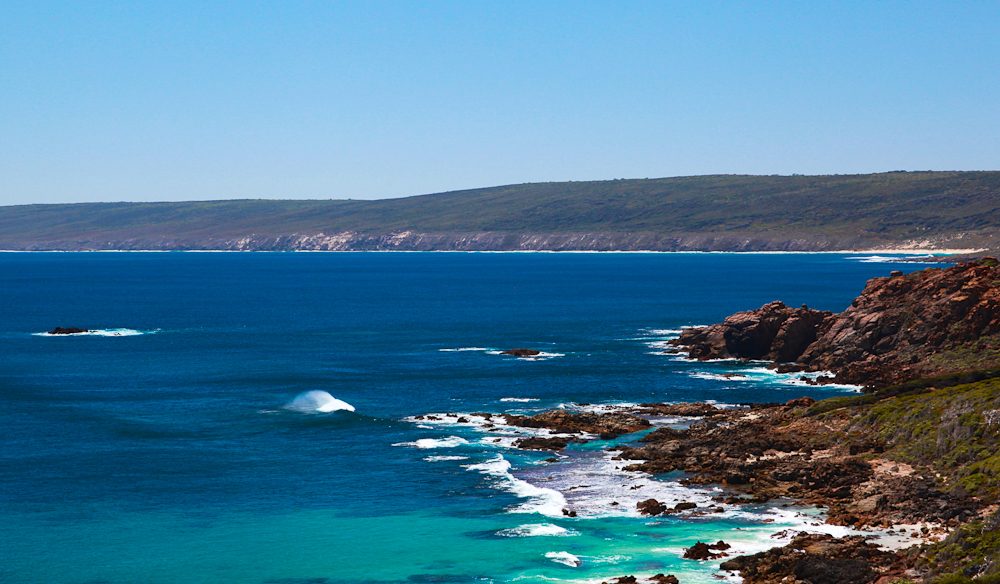30 September 2019
![]() 6 mins Read
6 mins Read

Turns out, you don’t need to be a waxhead to enjoy these beautiful beaches.
Torquay’s Surf Coast, an hour’s drive south-west of Melbourne, Vic.
It’s where organised competition, the surf industry and professional surfing was born in Australia, and where the world’s longest-running surf contest, the Rip Curl Pro, still goes down every Easter.

A surfing safari at legendary Bells Beach Victoria.
When the famous Bells Bowls is firing it’s one of the most exhilarating rides in the world. And the fact that you can surf nearby Winki Pop when the contest is on at Bells, or vice versa, is a surf journalist’s dream.
Bells and Torquay are the gateway to the spectacular Great Ocean Road, one of this country’s greatest coastal drives. Rugged cliffs, stunning scenery and quaint coastal towns make this a holiday haven.
Well, that would be telling. But there is a whole lot more surf, and a lot fewer people, west of Cape Otway. That’s all I’m saying.
Three or four hours’ drive south of Perth.
It’s where WA surfing took off in the ’60s and where the 1973 Australian Titles were held, introducing east-coast surfers to the west coast’s raw power; numerous pro and amateur events have been staged here.

River Mouth, Margaret River, Western Australia
Indian Ocean swells slam straight into this rugged coast, producing Australia’s most consistent big surf, all surrounded by pristine bush.
Stunning scenery, gorgeous beaches, world-class wineries, amazing caves. What’s not to love?

Azure: One side of the view on the Cape to Cape track, Margaret River, WA. (photo: Fleur Bainger).
A long, long drive north to the state’s desert coast, where reeling lefts break along limestone cliffs.
The northern end of the Sunshine Coast, an hour’s drive from Brisbane, Qld.
The spectacular national park headland, the string of consecutive point breaks, and its central role in the evolution of performance surfing and equipment.

Noosa Heads
Legendary surfer-shaper Bob MacTavish once famously declared that surfing Noosa was “like having a cup of tea with God”.
National park status means the headland is largely unchanged from time immemorial.
The further you walk, the fewer surfers you’ll find, and the more distant the hubbub of Hastings Street feels.
You can enjoy the cafés, bars, shops, restaurants and five-star hotels of Hastings Street, and still walk out around the headland, sit under a pandanus tree, watch the waves and surfers and feel completely lost in time.
Snapper Rocks, on the southern end of the Gold Coast.
It’s more consistent, with more reliable sandbanks thanks to the sand dredged from the nearby Tweed River mouth, and the wave can break for up to a mile.
You will have to share it with 300 other rabid surfers though.
Middleton Beach
100km south of Adelaide on the Fleurieu Peninsula, SA.
It is where the 1975 Australian Titles were held, and it offers a handy, reliable option for urban surfers escaping Adelaide.
While not the greatest wave, it is a long, spectacular stretch of beach at the northern end of the mighty Coorong wetlands, near the mouth of the Murray River. And it does have its moments.
The nearby towns of Victor Harbor and Port Elliot are full of quaint old stone buildings, cafés, restaurants and accommodation to suit every budget, nestled around some of South Australia’s most picturesque coast.
A fair way west of here, out on the barren, remote, and decidedly sharky desert coast of the Great Australian Bight.
Revealing more than that would put my life in serious peril (thanks to locals who’d like to see their secret kept safe).
Sydney’s Northern Beaches, NSW.
It is the best, most consistent wave in Sydney, has been a hotbed of surfing talent and a testing ground for new board designs since the 1960s, and was the scene of many of competitive surfing’s finest moments.
The long bowling lefts, the shorter, punchy Alley rights, the abrupt barrels of Car Park rights and the ledgy lefts of the Point make this a wave-riding smorgasbord all at one beach. [Ed’s note: Huh?!]
On any half-decent day you’ll see some of the best surfers in the country tearing it up – hot grommets like Davey Cathels, World Tour performers like Chris Davidson, and revered legends like Simon Anderson, side by side in the line-up.
Or you can just enjoy the walk along the beach to Collaroy to the south, or over the headland to Little Narrabeen or Warriewood to the north. All this, with Sydney’s cosmopolitan charms on your doorstep.
Found on the far north coast of NSW, where you can take your pick of half a dozen world-class right-hand point breaks in warm water.
Tim’s new book Surfari (Ebury Press, $34.95) is out now. It’s about packing up his family and heading off on the Big Lap, in search of the perfect wave – and the perfect life.
LEAVE YOUR COMMENT